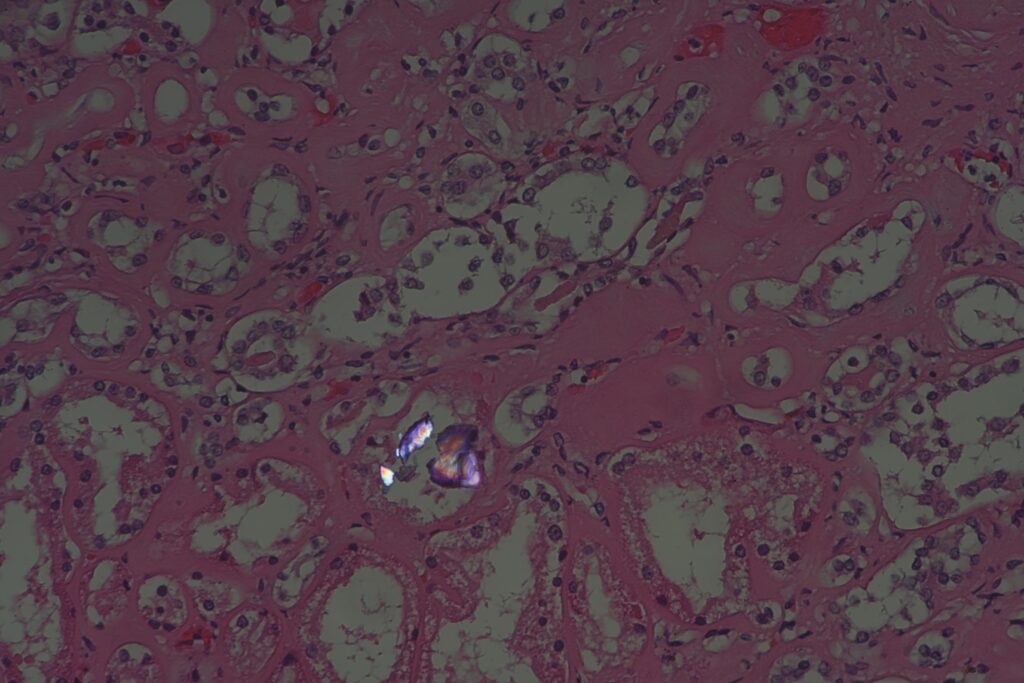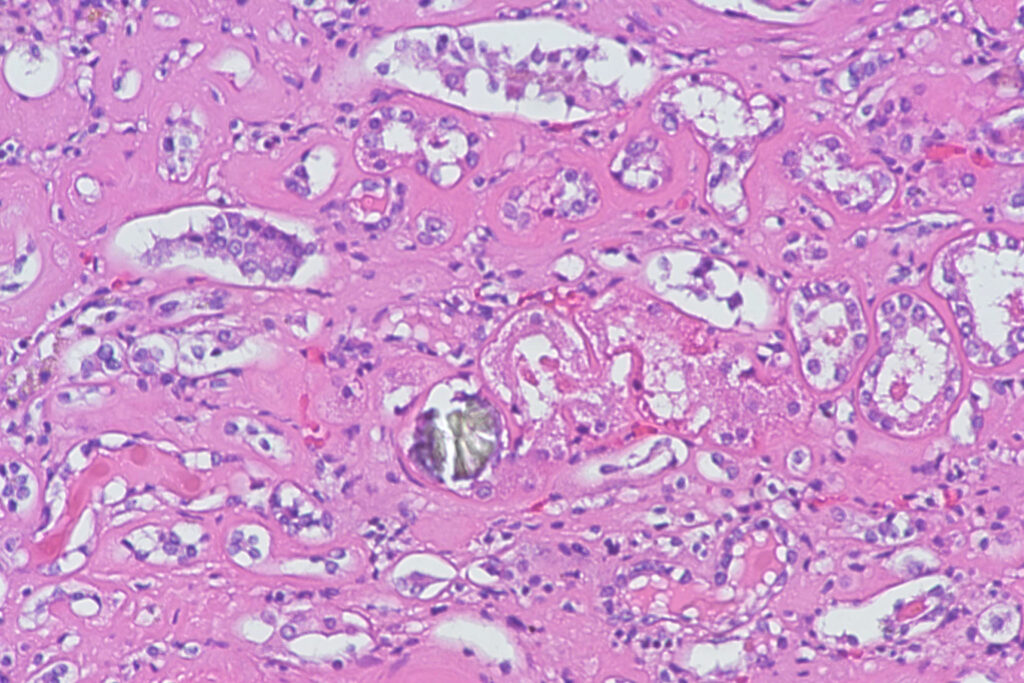This is the kidney of the person with diabetic nephropathy I just posted about. In addition to Kimmelstiel-Wilson nodules, the decedent had scattered oxalate crystals there.
Here’s a medium power view of a piece of kidney:
And here it is under polarization:
Now, when you read the textbooks, they always say that the oxalate crystals look like “sheaves of wheat.” I have two problems with that. The first is that I don’t know anybody younger than me who has ever seen an actual sheaf of wheat — and I only saw them as a kid in Halloween and Thanksgiving day displays. It’s one of those pathology tropes that nobody actually can connect to directly any more. Sorta like “bitter almond” smell in cyanide. Who goes around smelling bitter almonds? Do they really stink? I wouldn’t know, having never seen one in my life.
The second is that they don’t really look like sheaves of wheat to me. To me they are just irregular:
A fair number of them seem to have an OK “fan” or radiating feel:
But that double “sheaf” pattern, which is basically two of those fan shapes stuck together, is not that common in my experience. Don’t get me wrong, the shape is fairly distinctive — it’s not the needles or cubes or clumps you see with some other stuff.
Back when I was a tyke, oxalate nephropathy was not all that uncommon due to poisoning with ethylene glycol. I haven’t seen one of those cases in a decade. It used to be that someone would kill someone with ethylene glycol and get away with it for a few years. It worked so well that they’d start doing it again. In my cases, it was usually a woman who killed her husband, and then started disposing of lovers that way. Then she’d get caught, there’d be an exhumation or two, and it would be all over the papers. People would read the papers and say to themselves “Hey, that sounds like a great way to get rid of my asshole spouse!” and we’d have a rash of these things for a year or two. It would be on everybody’s mind, and folk would diligently look for the cases. I can remember as a young pathologist doing touch preps of kidneys so I’d catch them quickly. After a few months to year or so, it would die down, and you wouldn’t see any cases for four or five years or more. Then there’d be another spike.
I remember seeing the same pattern with arsenic poisoning as well. We used to train on trying to see arsenic effects in the liver and such. But that’s for another post — if I ever see one again.
No more. I don’t think I’ve seen an ethylene glycol poisoning in over a decade. The last case that comes to mind was an alcoholic who found a bottle of “wine” in a landfill, but it turned out to be full of used antifreeze, and somebody had used an empty wine bottle to hold it after they’d flushed their radiator. I still check and find oxalate nephropathy now and then, but it’s all natural disease. I still polarize every case I get. I polarize the kidney to look for oxalate and other crystals, and I polarize the lungs to look for debris from intravenous drug use. And, I get a few hits now and then on both. It’s easy to do, it’s an easy diagnosis to pick up — these things aren’t subtle — and it only takes a second or two.
Nowadays, it’s wacky diets, bariatric surgery and other things that alter enteric absorption, and some chronic diseases such as chronic pancreatitis and diabetes mellitus (also likely because of enteric effects) that I see it in. The crystals in these cases are not nearly as plentiful as in poisoning cases in my personal experience, but they are there.
So, here’s a take home question for you. There are three primary ways that drinking ethylene glycol can kill you. What are those mechanisms?







